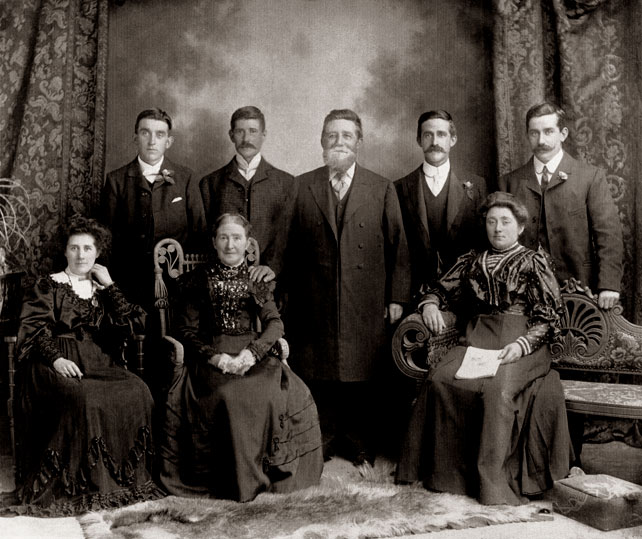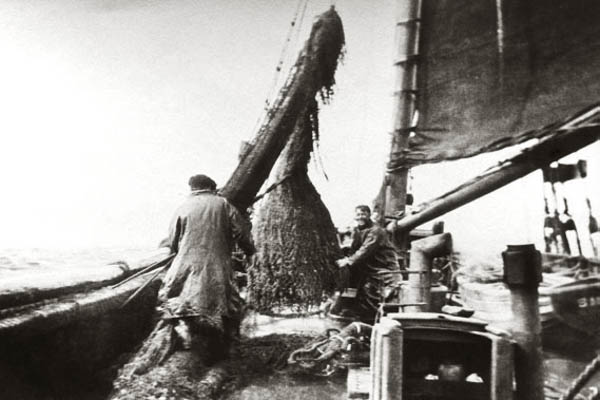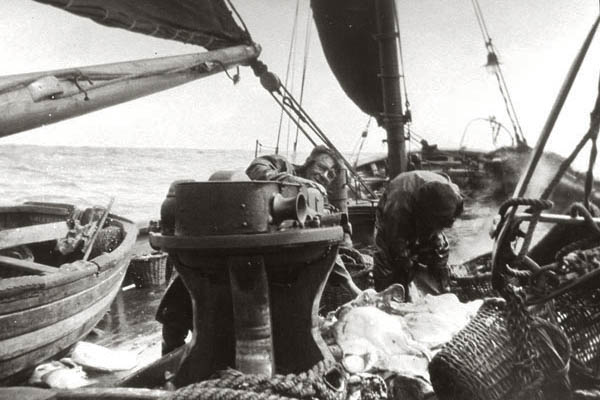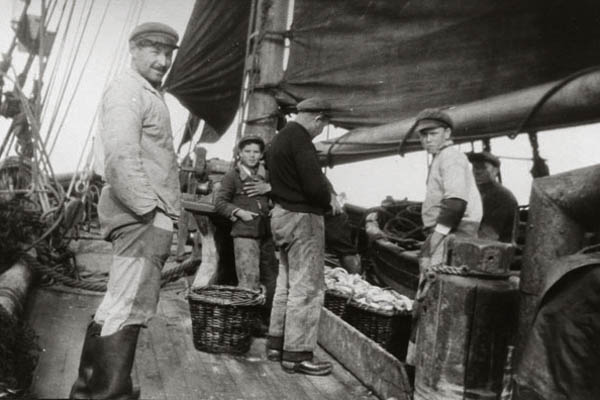
History » England
⪼ England 1911 - 1937
DEODAR was built as a sailing trawler at the Robert Jackman & Sons Shipyard at the outer breakwater in Brixham, Devon, in 1911. The town had several shipyards building sailing trawlers and the largest were Sanders in Galmpton, Upham and Jackman. At Jackman's yard, at least 130 trawlers were built between 1885 and 1927.
DEODAR was commissioned by Henry and Edward James Hellings, fishmongers at Hamilton Terrace in Milford Haven. She was ketch-rigged, probably with a standard rig of about 35 feet measured between hounds and deck on the mainmast. She was assigned the fish number BM 313 and as she was over 40 register ton net she was referred to in local language as 'a big sloop'. At the same time, Hellings also owned several other sailing trawlers one of which was SWEET HEATHER BM 302. The total spread of sail would have amounted to approximately 260 square meters plus extra sails.
The fishing equipment included an, approx 48 foot, beam trawl as well as a steam driven capstan of the brand Elliot & Garrood.
There was no motor onboard and the crew consisted of four men, a skipper, 1st and 2nd mate and a deckhand.
There was no motor onboard and the crew consisted of four men, a skipper, 1st and 2nd mate and a deckhand.
DEODAR trawled in the Bristol Channel and along the western and southern coasts of England and Wales. The catches were probably landed in various fishing ports such as Isle of Man, Milford, Fleetwood, Fishguard, Padstow, Newlyn, Plymouth and Brixham and consisted of Atlantic cod, whiting, etc.
Since the 1700´s, the trawling technique was spread by fishermen from Brixham eastwards towards the Thames and further up along the east coast and later on in the Bristol Channel. The fishing developed from, more coastal fishing, to deep water fishing on the North Sea. By 1796 Brixham already had a fishing fleet of over 100 sailing trawlers. The vessels became larger in the 1800’s and were very seaworthy. The markets continued to grow with the beginning of industrialisation and in 1868 the railroad came to Brixham which facilitated the delivery of fresh fish. When, in the 1880s many ports such as Grimsby and Hull went over to steam-driven ships, the Brixham fishermen preferred to stick with fishing under sail. The first years of the 20th century up until the First World War were the most prosperous ever for Brixham, but the war meant catastrophe for the sailing fleet. German U-boats diminished the number of commercial and fishing vessels. The fishing industri recovered temporarily after the war, but profitability became worse for fishing vessels without a method of propulsion other than by sails. Many vessels were sold, some as private pleasure craft. In 1933 only 15 Brigham sailing trawlers worked from Brixham, including three with auxiliary machine. The end was close and in 1938 most of the vessels were sold or for sale in anticipation of potential buyers.
DEODAR and SWEET HEATHER were already sold in June 1919 to Lowestoft on the east coast. DEODAR was registered as LT 543. Lowestoft was the port in England which, besides Brixham, continued fishing under sail. The new owners were the company Slater & Barnard, whose fleet consisted of twenty-two sailing trawlers
including also SUNBEAM. Both were sold to Sweden early in the spring of 1937.
Since the 1700´s, the trawling technique was spread by fishermen from Brixham eastwards towards the Thames and further up along the east coast and later on in the Bristol Channel. The fishing developed from, more coastal fishing, to deep water fishing on the North Sea. By 1796 Brixham already had a fishing fleet of over 100 sailing trawlers. The vessels became larger in the 1800’s and were very seaworthy. The markets continued to grow with the beginning of industrialisation and in 1868 the railroad came to Brixham which facilitated the delivery of fresh fish. When, in the 1880s many ports such as Grimsby and Hull went over to steam-driven ships, the Brixham fishermen preferred to stick with fishing under sail. The first years of the 20th century up until the First World War were the most prosperous ever for Brixham, but the war meant catastrophe for the sailing fleet. German U-boats diminished the number of commercial and fishing vessels. The fishing industri recovered temporarily after the war, but profitability became worse for fishing vessels without a method of propulsion other than by sails. Many vessels were sold, some as private pleasure craft. In 1933 only 15 Brigham sailing trawlers worked from Brixham, including three with auxiliary machine. The end was close and in 1938 most of the vessels were sold or for sale in anticipation of potential buyers.
DEODAR and SWEET HEATHER were already sold in June 1919 to Lowestoft on the east coast. DEODAR was registered as LT 543. Lowestoft was the port in England which, besides Brixham, continued fishing under sail. The new owners were the company Slater & Barnard, whose fleet consisted of twenty-two sailing trawlers
including also SUNBEAM. Both were sold to Sweden early in the spring of 1937.
Photos from sister ship VALERIAN BM 161. Photos © Alph Smith skipper of Valerian.
Logo












